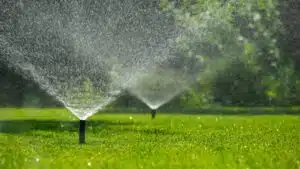Trees are more than just shade providers—they’re living investments in your landscape. But like any investment, they need regular care to thrive. Pruning keeps trees healthy, safe, and beautiful. The question is: how do you know when it’s time to grab the saw?
Let’s walk through the key tree pruning signs that tell you your tree could use a trim. At J&J Nursery and Garden Center, we have the expertise to evaluate your trees and provide professional pruning services.
Dead or Damaged Branches
One of the most obvious signs your tree needs attention is the presence of dead or damaged branches. These limbs often look brittle, lack leaves during the growing season, or have peeling bark. Dead branches don’t just look bad—they’re a safety hazard. High winds or heavy snow can cause them to snap and fall, putting your home, car, or family at risk.
If you spot branches that appear lifeless or diseased, it’s time to prune. Removing them helps prevent the spread of decay to healthier parts of the tree.
Crossing or Rubbing Limbs
When branches grow too close together, they start to rub against each other. Over time, this friction creates wounds that invite pests and disease. Crossing limbs also compete for sunlight and nutrients, which can weaken the tree’s overall structure.
Pruning these problem branches early allows the tree to focus its energy on stronger, healthier growth. It also improves airflow through the canopy, reducing the risk of fungal infections.
Overly Dense Canopy
A thick, bushy canopy might seem like a sign of a healthy tree, but it can actually cause problems. Too much foliage blocks sunlight from reaching the inner branches and lower plants. It also traps moisture, creating a perfect environment for mold and mildew.
Thinning out the canopy lets light and air circulate freely. This promotes even growth and helps the tree stay strong from the inside out.
Poor Shape or Unbalanced Growth
Trees naturally grow in different shapes, but sometimes their structure gets out of hand. Lopsided growth, drooping branches, or limbs that grow straight up (called water sprouts) can all signal a need for pruning.
Correcting these issues early helps maintain the tree’s natural form and prevents future structural problems. A well-shaped tree is also more resistant to storm damage.
Low-Hanging or Obstructive Branches
Branches that hang too low can interfere with mowing, block walkways, or scrape against your roof. They can also limit visibility near driveways and streets, creating safety concerns.
Pruning these limbs improves access and sightlines while keeping your property looking neat. Just be careful not to remove too much at once; most experts recommend taking off no more than 25% of the canopy in a single season.
Signs of Pest or Disease Damage
Discolored leaves, unusual growths, or visible insects are all red flags. Pests like borers and beetles often target weak or stressed trees, and pruning away infested branches can slow their spread.
If you notice oozing sap, blackened wood, or large sections of missing bark, your tree may have a disease. In these cases, pruning should be done carefully to avoid spreading the infection. Disinfect your tools between cuts, and consider consulting an arborist if the damage is extensive.
When to Prune: Timing Matters
The best time to prune depends on the tree species and the reason for pruning. For most trees, late winter or early spring is the ideal time. Pruning while the tree is dormant reduces stress and allows it to heal quickly once growth resumes.
However, some situations call for immediate action. Dead or dangerous branches should be removed right away, regardless of the season. And certain trees, like those that bloom in spring, are better pruned right after flowering to avoid cutting off next year’s buds.
If you’re unsure about timing, a quick consultation with a local nursery or arborist can point you in the right direction.
Safety First: Choosing the Right Tools
Pruning isn’t just about knowing when—it’s also about using the right equipment. Hand pruners work well for small branches (up to ¾ inch thick), while loppers handle anything up to 2 inches. For larger limbs, a pruning saw is your best bet.
Always keep your tools sharp and clean. Dull blades can crush branches instead of making clean cuts, which slows healing and increases the risk of infection. And if you’re working above shoulder height or near power lines, it’s safer to call in a professional.
Maintaining Tree Health After Pruning
Pruning is only part of the equation. To keep your tree healthy long-term, follow up with proper care. Water regularly during dry spells, especially for newly pruned trees. Mulch around the base (but not touching the trunk) to retain moisture and regulate soil temperature.
Monitor the tree for new growth and any signs of stress. Fresh cuts should close over time, but if you notice oozing or discoloration, the tree may need additional attention.
Keep Your Trees in Top Shape
Healthy trees start with attentive care. By watching for these tree pruning signs—such as dead branches, crossing limbs, and dense canopies—you can catch problems early and keep your landscape thriving.
Not sure where to start? Contact us today for professional tree services and advice. We’ll help you keep your trees in top shape for years to come. Don’t wait until it’s too late—take care of your trees now and enjoy a vibrant, healthy landscape for years to come.



